Use your spring and summer bounty to make fruit leather.
As summer winds up, the lure of fresh fruit from your favorite farmers’ market is too strong to deny. It’s easy to get caught up in the excitement of seasonal bounty and come home with pounds of ripe fruit. But once the ice-cream maker has swirled together countless batches of heavy cream and ripe peaches and you can no longer justify another bowl of strawberry shortcake, there’s still plenty left. Now what?
Take a cue from your children’s favorite chewy snacks and make a batch of healthy, oh-so-simple fruit leather.
“Fruit leather is a vehicle for using fruit that is blemished or not so pretty — that fruit you just know you’re not going to get to,” says Lara Ritchie, culinary director of Nothing To It! Culinary Center in Reno.
In short, fruit leather is made using puréed fruit combined with an acid, sugar, and other flavorings. Water is removed from the fruit using a dehydrator or a slow-and-low technique in the oven.
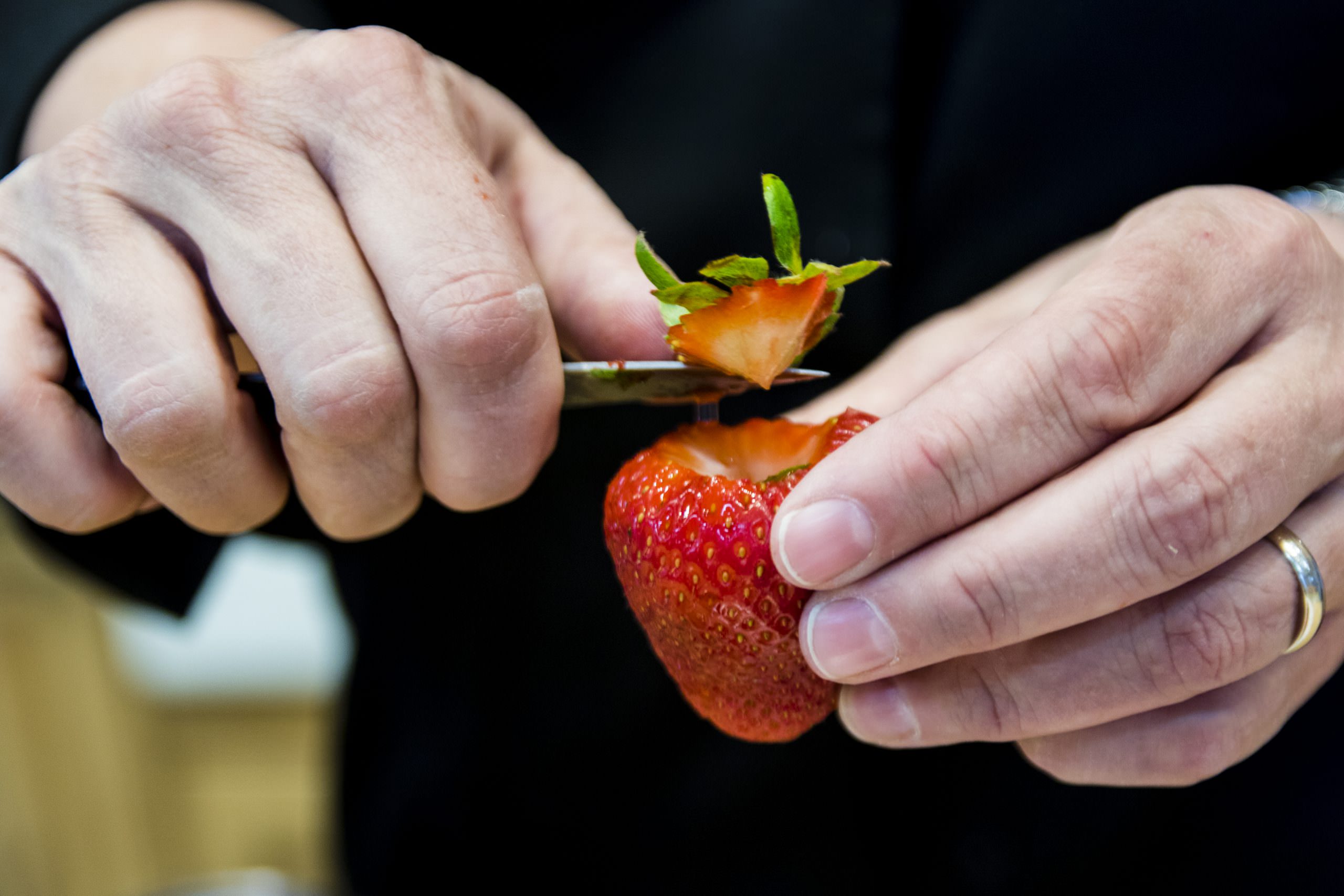
Hulling core from strawberry: Chef Lara Ritchie hulls the strawberries to prepare the fruit leather
It’s also highly customizable and easy to throw together with whatever spices, sweeteners, and flavorings you have on hand.
“I like to mix up the fruit, like apricot raspberry or plum boysenberry,” Ritchie says. “You also can experiment with spices: coriander seed, vanilla bean, cinnamon, or nutmeg.”
To start, wash and cut up your seasonal fruit of choice. Everything from stone fruits and grapes to berries and pears can be turned into fruit leather.
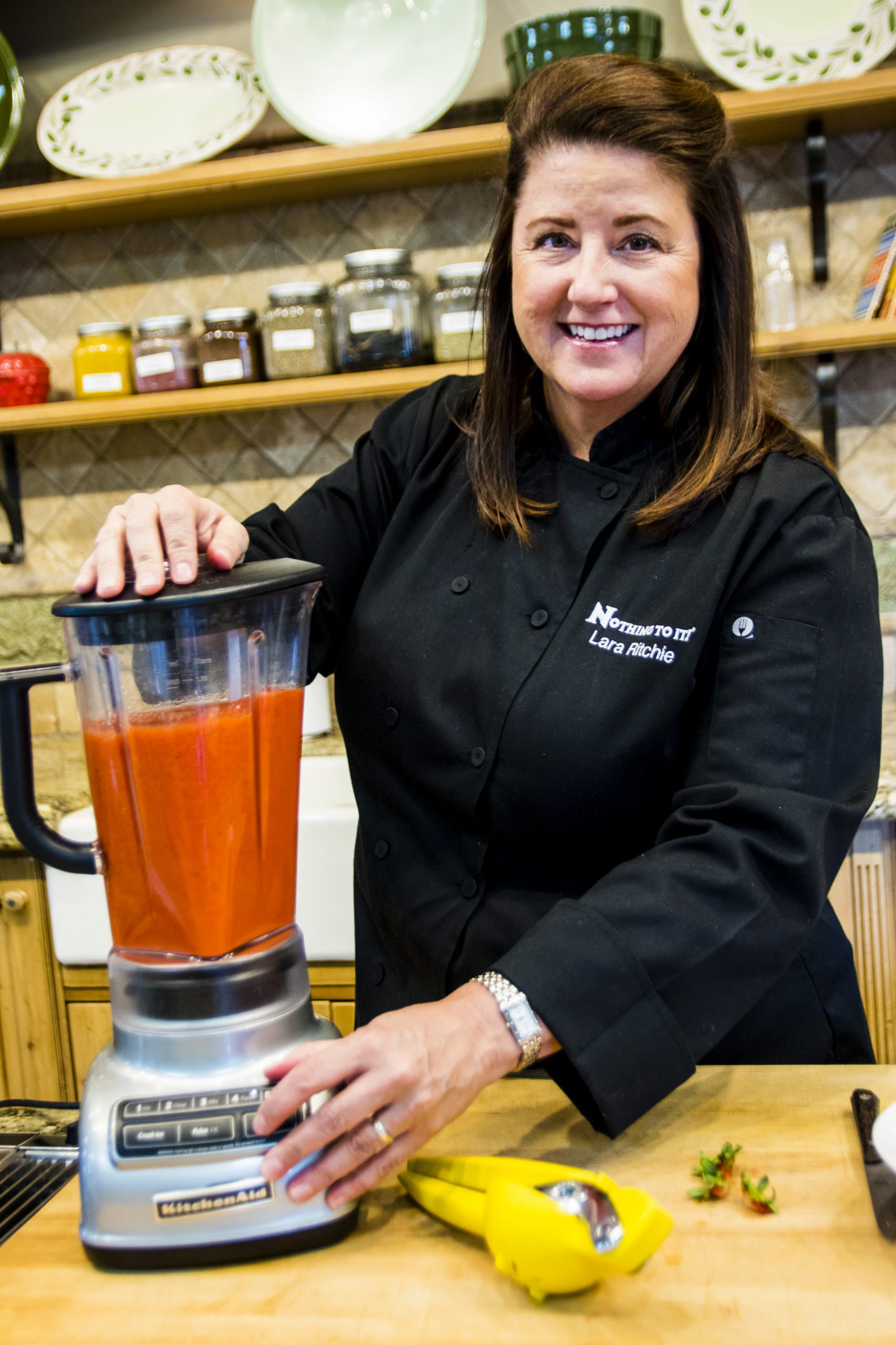
Ritchie blends strawberries with sugar and lemon juice
“I personally would leave the skins on the fruit,” Ritchie says. “It might not look as pretty, but you’re getting a little more nutritional content.”
Next, purée the fruit in a blender with a little water as needed or use a potato masher while the fruit cooks in a saucepan. While some people like to use raw fruit for the leather, cooking can add to the intensity of the flavor and dissolve the sugar.
“The tricky part is knowing how much liquid to leave as you thicken it because you don’t want it to scorch, but you also don’t want it to be too runny,” Ritchie explains.
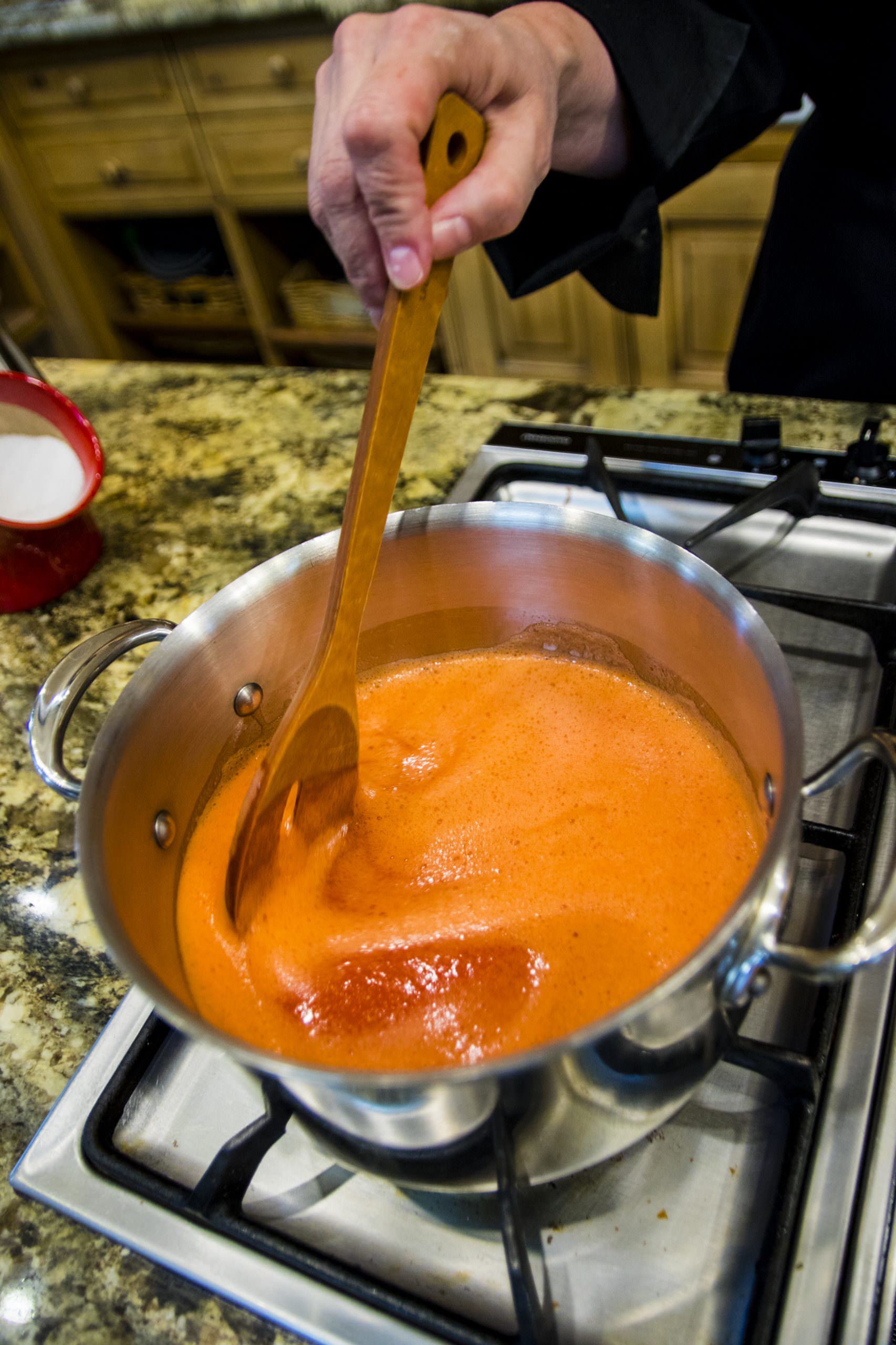
The strawberry purée is heated until thick
Make sure to taste the fruit to determine its flavor before adding a sweetener such as sugar, honey, agave, or maple syrup one tablespoon at a time, sampling as you go.
Taste testing also will let you know how much acid to add to the mixture.
“You could use grapefruit, lime, or lemon,” Ritchie suggests. “That really makes flavors pop.”
At this point, you can get creative and add in flavor with ingredients such as orange zest, almond extract, ground clove, or fresh mint. To add texture, try mixing in finely chopped nuts, coconut flakes, or seeds.
Fruit leather can be dried using a dehydrator or an oven set to about 140 degrees F.
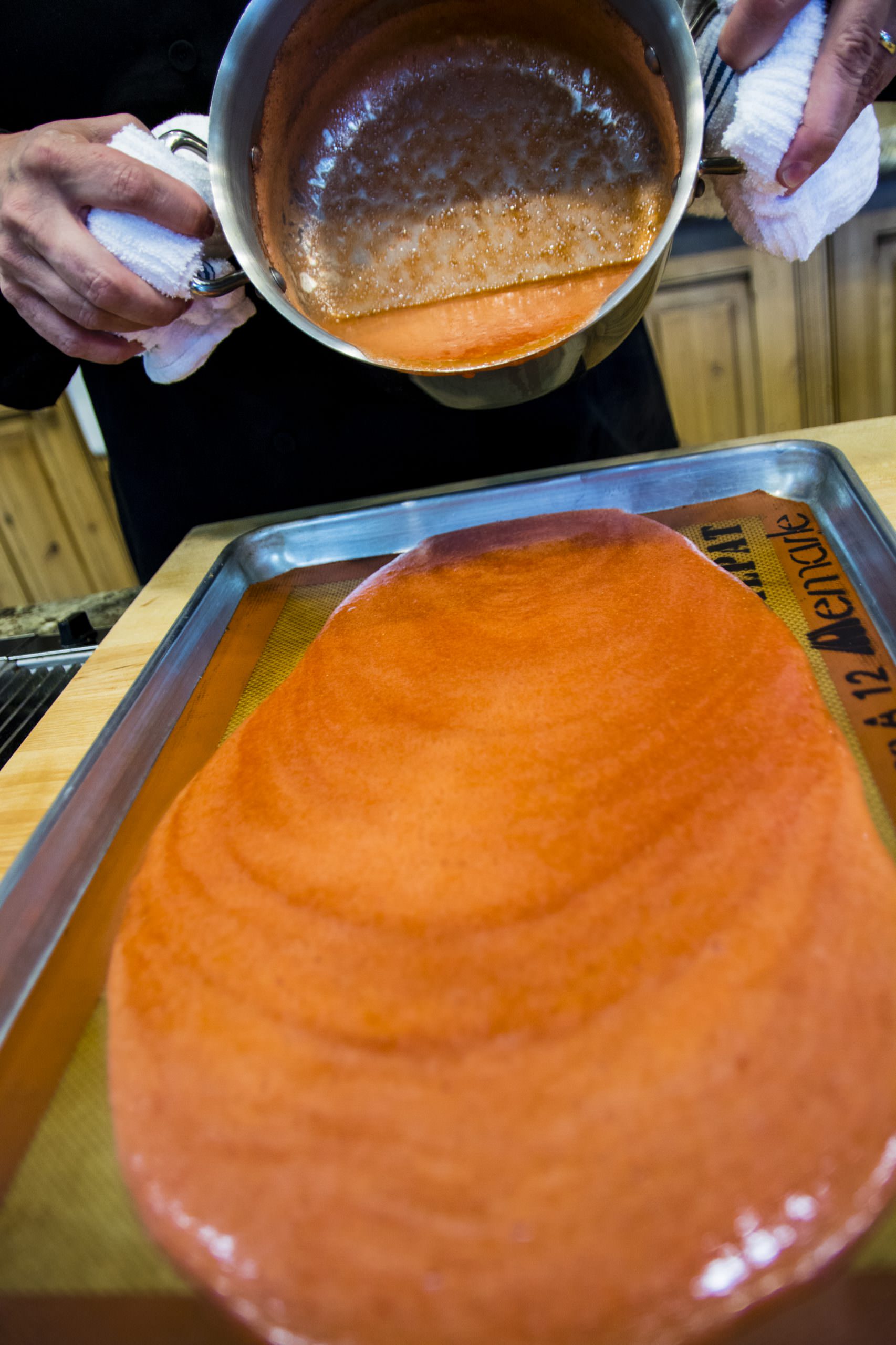
The thickened purée is spread into a thin, even layer on a baking sheet lined with a silicon mat
If you’re using the oven method, line a rimmed baking sheet with parchment paper or a reusable silicon mat. Pour the purée into the baking sheet and spread it until it’s roughly one-eighth- to one-quarter-inch thick, depending on preference.
“Usually a convection setting is going to work best,” Ritchie says. “The dehydration time depends on the fruit and how thick you make it — anywhere between eight and 12 hours.”
Fruit leather dries from the outside edge in, so it’s done when you touch the center of the leather and there is no indentation.
Remove the leather from the pan while it’s still slightly warm, and slice into strips or, with cookie cutters, create shapes, perhaps ones that reflect the season.
Fruit leather can be stored for about a month in a sealed container at room temperature or up to a year in the freezer, but typically, it gets eaten pretty quickly.
Claire McArthur is a Zephyr Cove-based writer who deeply regrets not putting a dehydrator on her wedding registry. You can reach her at Clairecudahy@gmail.com.
Strawberry Fruit Roll-Ups
(courtesy of Lara Ritchie, culinary director, Nothing To It! Culinary Center in Reno. Makes 13 pieces)
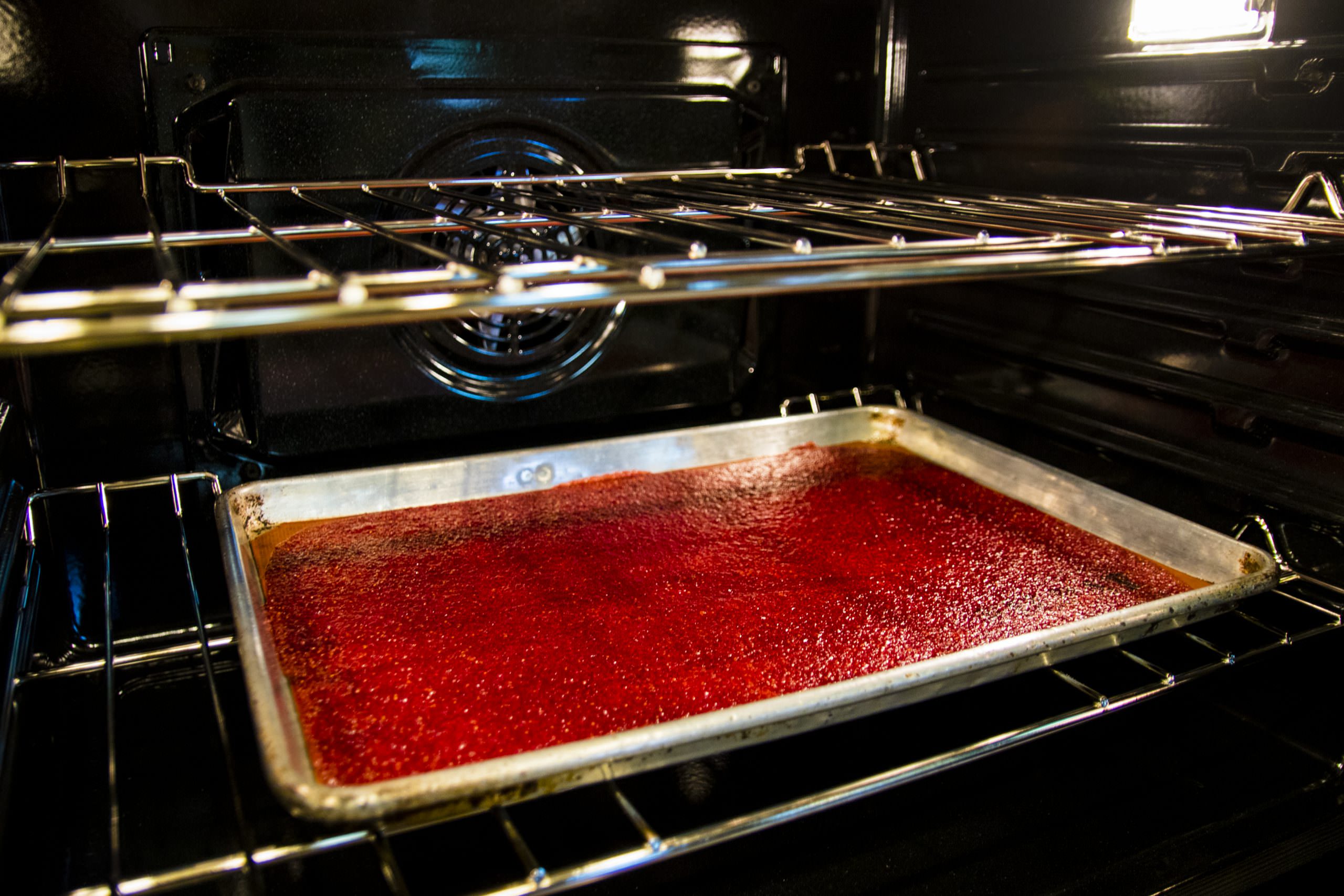
The fruit leather is baked until set removing fruit leather from silpat
1½ pounds fresh strawberries, cleaned and hulled (or substitute for another fruit in season)
¾ cup sugar
1 tablespoon fresh lemon juice
Optional: orange zest, vanilla beans
Preheat oven to 200 degrees F. Line a large baking sheet with a silicon mat.
Place strawberries in a blender and blend until puréed. You may need to add a bit of water to get it to purée. Add enough sugar to sweeten, as well as lemon juice.
Put in a saucepot and cook until thickened. Take care that it doesn’t scorch on the bottom of pan. If using vanilla bean, split bean and cook with strawberries. If using orange zest, add after cooking.
Pour into prepared pan and spread out into a thin, even layer. Bake 3 to 3½ hours or until center is set. Remove from oven and let cool.
Carefully peel up the fruit leather and place sticky, smooth side on parchment paper. Cut to size so that you have an even rectangle to work with. (Ritchie usually cuts off edges, as they can be crunchy and uneven.) Cut into 2-inch strips and roll up firmly. Store in airtight container.
Other in-season fruits can be substituted for the strawberries. Taste the fruit ahead of time and adjust sugar based on its sweetness.
Author’s Notes: This recipe takes a faster approach to dehydration using a higher oven temperature. It also can be done at a lower temperature over an extended period of time or using a dehydrator. Check periodically so as not to overcook.


